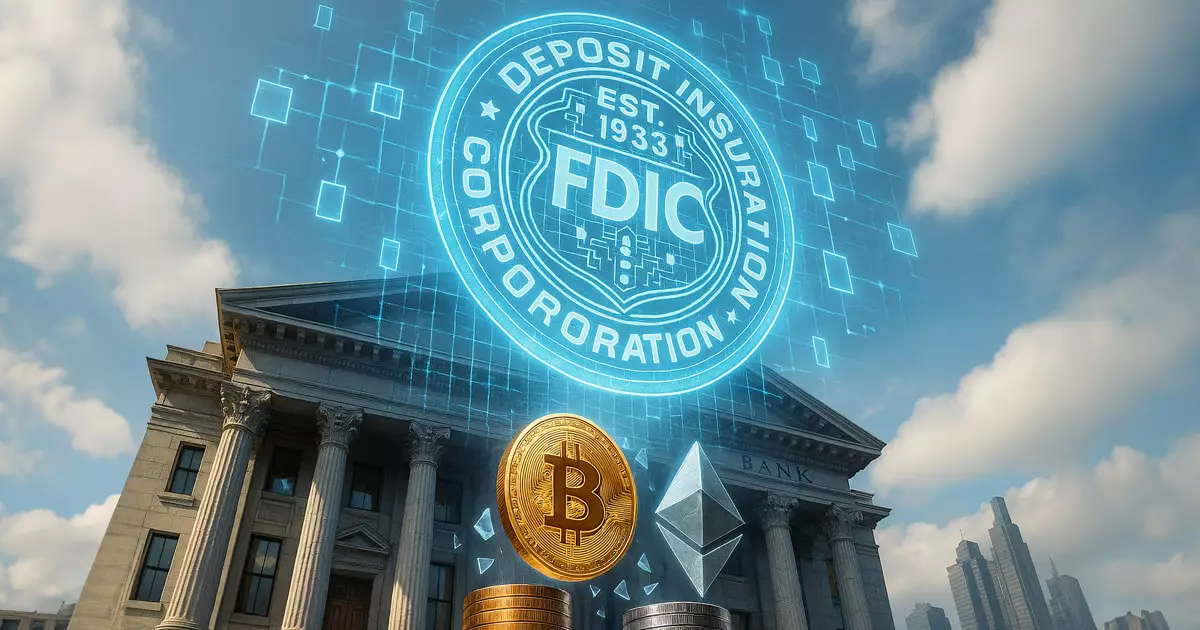The Federal Deposit Insurance Corporation (FDIC) has long been recognized for its role in safeguarding deposits and maintaining the stability of the banking system. Historically, regulators have taken a conservative stance on innovations that disrupt traditional financial systems, particularly in the realm of cryptocurrencies. However, recent changes herald a groundbreaking rethink of this clearly outdated position. The FDIC’s newfound openness to banks engaging with public, permissionless blockchains could represent a monumental shift, particularly as the United States looks to catch up with jurisdictions that have embraced blockchain technology. This evolution underscores an urgent need for regulatory frameworks that not only ensure safety but also facilitate innovation in a world that is rapidly digitizing.
A Fragile Balance Between Innovation and Regulation
Travis Hill, the FDIC’s Acting Chairman, has articulated a vision that appears to value innovation without relegating safety to the backseat. By acknowledging that a blanket prohibition on public blockchain usage is excessively restrictive, Hill opens the door for a creative dialogue among industry players and regulators. This makes sense; after all, technology evolves at an unprecedented pace, and clinging to outdated regulations only stifles economic growth. Nonetheless, Hill’s emphasis on establishing “appropriate guardrails” is crucial. To address inherent risks in blockchain technologies while promoting advancement, the FDIC must craft regulations that are both flexible and firm.
Nonetheless, the vagueness regarding supervision on whether public chains can operate in a permissioned mode reflects deep-seated uncertainty within the regulatory environment. The current inertia on this crucial matter could hinder legitimate innovation while enabling bad actors to exploit regulatory loopholes. Hill’s remarks signal a willingness to critically assess these blurred lines, which presents an opportunity for more robust dialogue surrounding responsible blockchain deployment in mainstream banking.
The Future of Stablecoins: A Double-Edged Sword
As the landscape becomes increasingly populated with cryptocurrencies and digital assets, stablecoins garner significant attention. Hill’s comments regarding potential legislative moves and updates to pass-through deposit insurance regulations should be a clarion call for both the banking community and policymakers. If adequately defined and regulated, stablecoins could offer groundbreaking benefits—providing fast, low-cost transactions while maintaining the reliability of dollar-backed assets.
However, there is an undeniable reality that accompanies this potential: the risks surrounding liquidity management and cybersecurity are significant. The threat of illicit activities permeating the world of digital finance cannot be ignored. The FDIC must tackle these issues head-on, by developing stringent safeguards to protect against misuse, while simultaneously enabling innovation to germinate in safe environments. This balancing act is complicated, but undeniably necessary.
Tokenization: The New Frontier
Hill has also opened the discussion on tokenizing real-world assets, indicating a paradigm shift in how we view deposits and their preservation during bank resolutions. His assertion that “deposits are deposits, regardless of the technology” threatens to redefine the banking landscape forever. If managed intelligently, tokenization has the potential to revolutionize the very nature of assets, with implications that extend far beyond the banking industry.
However, this innovation comes with pressing concerns. The fear that smart contracts could allow for rapid fund outflows in a bank failure scenario presents a poignant reminder that while technology facilitates unprecedented efficiencies, it also exposes vulnerabilities in traditional financial infrastructures. The FDIC’s attempts to align on-chain programmability with traditional regulatory expectations could either safeguard the system or expose it to new levels of risk. The agency must tread carefully to avoid falling into a technocratic quagmire that prioritizes speed over diligence.
A Call for Responsible Definitional Work
In sum, the FDIC’s evolving stance represents a pivotal moment in the intersection of finance and technology. The potential for creative banking solutions has never been more within reach, yet that potential must be harnessed with caution. As Hill acknowledges the need for more clearly defined regulatory boundaries, it becomes evident that collaboration is essential. Engaging various stakeholders—including innovation experts, traditional bankers, and legal analysts—will be vital in crafting a workable framework.
The FDIC’s recent statements resonate strongly within the context of a more dynamic banking environment. However, to truly realize the potential benefits of this new era, regulators must act decisively and pragmatically, rather than indulging in endless debate over definitions and standards. The message is clear: we must embrace the changing landscape while ensuring that the principles of safety and accountability remain firmly in play.
















Leave a Reply